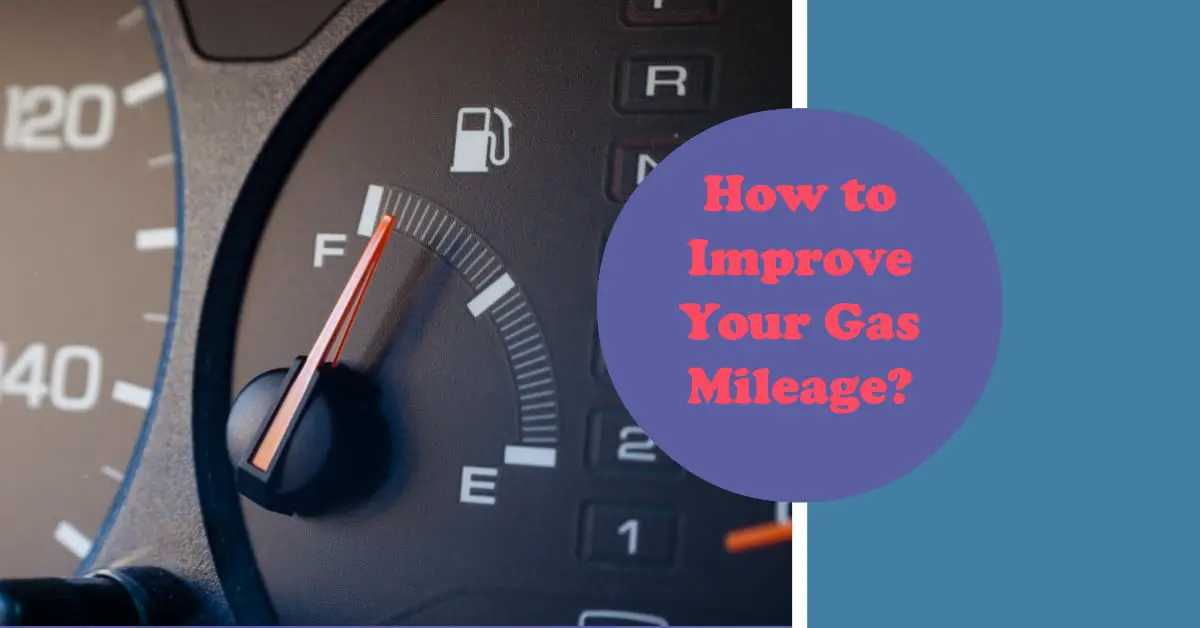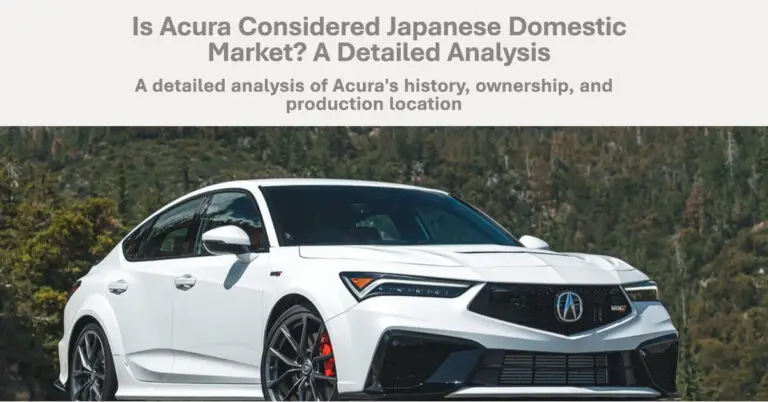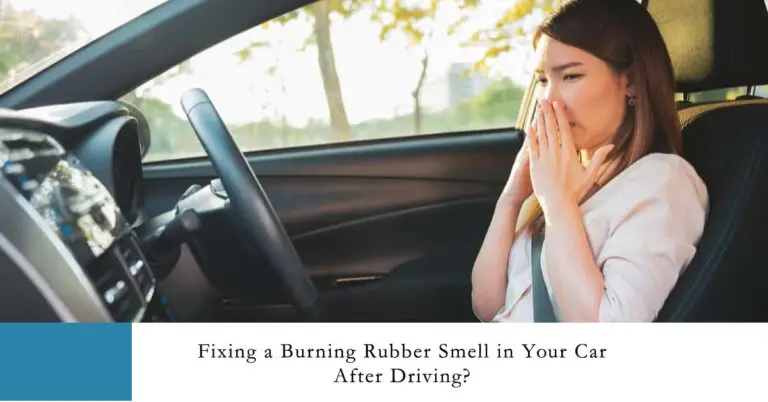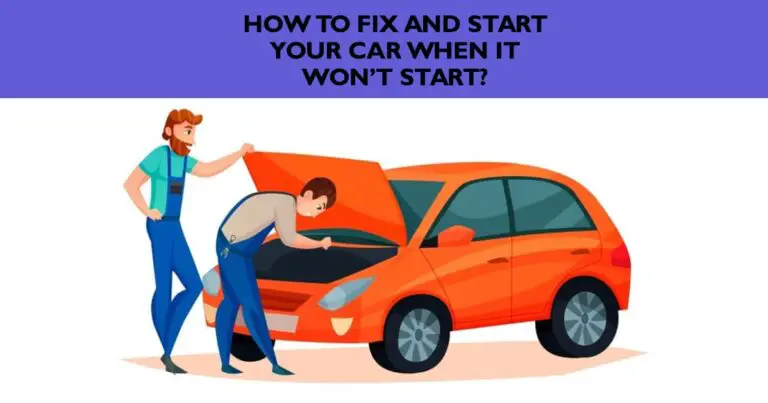How to Improve Your Gas Mileage? 100% Increase

With gas prices yo-yoing up and down like a rollercoaster, drivers are looking for ways to squeeze every last mile out of each gallon of gas. But how exactly can you improve your car’s fuel efficiency? How do you get better gas mileage? After all, the EPA fuel economy estimates printed on that new car window sticker seem like a fantasy when the pump starts running your credit card.
Well friends, improving fuel economy doesn’t have to be some unicorn fairy tale. With some simple changes to your driving habits and regular vehicle maintenance, you can absolutely extend each tank of gas. This comprehensive guide to increasing MPG covers everything from adjusting driving style to accessories and modifications that will have you exclaiming “dang” at the gas pumps.
We’ll dive into questions like:
- How does speed and acceleration affect MPG?
- What maintenance boosts fuel efficiency?
- How much do aerodynamic improvements help?
- Are fuel additives worth it for better mileage?
- How do different accessories like roof racks impact MPG?
And much more. By the end you’ll have twenty tips to start maximizing the miles out of every gallon. Let’s get rolling on down the road to higher MPG!
Table of Contents
Why Improving Your Car’s MPG Matters
Before jumping into the nitty gritty fuel economy tips, let’s chat briefly why MPG matters in the first place. The average driver puts over 13,000 miles per year on their vehicle. That’s a lot of fill ups! Maximizing your car or truck’s fuel efficiency directly translates into some serious savings. We’re talking keeping hundreds of dollars in your pocket that would otherwise go towards gas every year.
Not only does improving MPG save you hard-earned moola, it also reduces your carbon footprint. The less gas burned per mile traveled, the less CO2 emitted. Being fuel efficient benefits the environment. It’s a win-win for your wallet and the planet.
Finally, when your vehicle squeezes more miles out of each tank, it extends the time between fill ups. Nothing’s more annoying than constantly pulling into the gas station to refuel your thirsty ride. Improving mileage means fewer pit stops to pump gas.
Regularly Check Tire Pressure
Let’s kick things off with one of the easiest and most effective ways to boost MPG – making sure your tires are properly inflated. Underinflated tires create more rolling resistance that forces your engine to guzzle extra gas just to turn the wheels. It’s like driving continually with the parking brake on!
Studies by the DOE show that for every 1 PSI drop in pressure, fuel economy decreases by .3%. For a typical mid-size sedan, that’s nearly 2% loss in MPG! Just from tires being 10 PSI under the recommended pressure.
Fixing leaks and keeping tires inflated to the vehicle or tire maker’s recommended PSI improves rolling efficiency and handling. Always use a quality tire gauge any time you fill up to check pressure. Don’t rely on the service station compressor gauge.
Make a habit of inspecting all tires at least monthly and before any long trip. Doing so will have you smiling when you see your average MPG rise. Having properly inflated tires is one of the fastest ways to start improving fuel efficiency.
Use the Recommended Viscosity Motor Oil
Next up – having the right grade of engine oil goes a long way towards optimal fuel economy. Vehicle owner’s manuals specify oil viscosity grades like 5W-20 or 10W-30. Using the recommend oil reduces internal friction and improves engine efficiency.
Thinner oils like 5W-20 provide just enough protection while reducing pumping losses inside the engine. That’s why most modern cars call for these lighter viscosity oils. Sticking to the grade of oil specified by the manufacturer is key.
While you’re keeping your engine lubricated, don’t forget to change the oil regularly. Used motor oil degrades and loses its achey-breaky properties. Follow the maintenance schedule in your owner’s manual, generally every 5,000-7,000 miles.
Lose Excess Weight in Your Vehicle
Here’s a simple physics equation for you: Less mass to accelerate equals better fuel economy. That’s why removing unnecessary junk from your car or truck improves MPG. Cleaning out the trunk and not hauling unneeded cargo reduces weight and saves gas. All that stuff takes extra fuel just to get moving.
Before any long trip, take a few minutes to lighten the load. Store roof racks when not using them. Consolidate gear to just the essentials. Avoid overpacking the cabin with unneeded bags. An organized, clutter-free vehicle translates to better MPG. You’ll get extra savings when driving around town by dumping all that miscellaneous stuff rolling around too.
Drive Mindfully and Watch Your Speed
This next fuel saving tip requires changing habits more than buying products or accessories. How you drive directly impacts MPG – for better or worse. Avoid aggressive jackrabbit starts, speeding, and hard braking. Instead, accelerate gradually and coast to stops whenever possible.
Cruising at a steady pace optimizes fuel injection and gear ratios. Constant speed changes force more shifting and excess fuel burn. Anticipate stops to minimize braking. Time green lights correctly, leave extra room and glance ahead to keep rolling. It takes surprisingly little gas to maintain momentum.
Exceeding the speed limit dumps fuel as wind resistance increases exponentially. Every 5 MPH over 50 MPH cuts fuel economy by 7% in many vehicles! Also watch idling since it burns gas with 0 MPG. Shut off your engine when stopped for more than 30 seconds to conserve gas.
Combine Trips and Reduce Unneeded Driving
Who doesn’t love an excuse to get in the car and cruise around? However, piling on the miles running errands here and there drains gas tanks. Carefully planning trips to accomplish multiple tasks at once saves fuel.
Consolidate outings so you’re not constantly hopping in the car. Make extensive lists for grocery store and other shopping to maximize each journey. Need a quick drink or snack? Consider walking or riding a bike when possible to avoid short 1-2 mile drives. It all adds up.
Carpooling also reduces overall miles driven. Offer to pick up coworkers instead of everyone driving separately. Bring a friend along running local errands. The more folks in a carpool, the more gas mileage multiplies.
Use Cruise Control on Highways to Maintain Speed
Here’s an easy way to improve highway fuel efficiency – use cruise control! This handy gadget maintains a set speed without continual throttle adjustments. That steady speed optimizes MPG by keeping the engine humming along in its sweet spot.
Cruise control reduces overall engine workload compared to manual control. On long highway drives it helps avoid inadvertent speed fluctuations that guzzle gas. Just be sure to disengage when not needed so it’s not trying to constantly maintain speed.
New adaptive cruise systems are even smarter by automatically adjusting speeds to match traffic flow. This further improves fuel efficiency by braking and accelerating for you. Cruise control is one of the simplest tools to boost MPG.
Moderate AC Use With Windows to Reduce Load
There’s nothing worseroony than rolling down the highway without cool air blowing. But using the AC does sap engine power and efficiency. Here’s how to balance staying chill in summer without draining gas mileage.
Start by parking in the shade whenever possible. Roll down the windows at lower speeds to keep air circulating. Keep the AC system maintained so it operates at peak efficiency. But when cruising above 40 MPH, close windows and use AC sparingly.
The key is moderating use to avoid full-blast AC the entire drive. Keep it reasonable, maybe 72-75 degrees. Small tweaks add up. With smart operation, the AC penalty doesn’t have to melt away all your fuel savings.
Keep Up On Vehicle Maintenance
While we’re talking tune ups, regularly maintaining your ride also maintains MPG. Spark plugs, oxygen sensors, air filters and other components gradually wear out. That makes your engine work harder gulping down gas.
Follow the maintenance schedule outlined in your owner’s manual. Key items like air filters and spark plugs impact engine efficiency – replace them at recommended intervals. Immediately fix any drivetrain issues like leaks or damaged hoses.
A well maintained engine optimizes the combustion process. Stop by a trusted mechanic for a tune up to keep your vehicle humming. Investing a little time and money on maintenance saves big bucks on gas in the long run. Think of it as MPG insurance.
Consider Fuel Efficiency Motor Oil Additives
What if you could pour a magic MPG elixir into your gas tank that cleans nasty gunk from engine innards to improve efficiency? Fuel additives promise to do exactly that – boost fuel economy. But how well do they work?
Certain additives help remove deposits, inhibit corrosion, clean injectors and improve combustion. Brands like Lucas and Wynns offer options specifically formulated to enhance mileage. However, results vary greatly. While some drivers report 1-2 MPG gains, others see no change.
If opting for additives, choose a reputable brand known for proven effectiveness. Only treat a full tank and maintain a consistent mix. It can’t hurt to try them, but consider additives a bonus not a miracle cure. Evaluate any MPG improvements over the long term.
Curb Aggressive Driving Habits
Here’s an easy habit to improve fuel efficiency – driving like your grandmother! Well, at least emulating her tame accelerator usage. Avoid aggressive jackrabbit starts, speeding, and hard braking. Simply curbing leadfoot tendencies maximizes MPG.
Accelerating full throttle burns excess fuel beyond what’s required to get moving. Look down the road and smoothly apply throttle. There’s no rush or race to each red light. Take it easy buster brown!
Also, obey speed limits and use cruise control to maintain consistent speeds without speeding. Driving 75 MPH instead of 65 MPH slashes MPG by 15% in many vehicles. Just slowing down improves efficiency more than you’d expect. Be in the slow lane and sang Que Sera, Sera!
Monitor Your Fuel Efficiency
By tracking fuel usage you can zero in on what driving habits and maintenance boost MPG – and what doesn’t. Start by recording your odometer reading each fill up along with gallons added. Then note the mileage between fills and calculate MPG. Apps like Fuelio make tracking easier.
Look for MPG trends after adjusting habits like cruising speed, using cruise control more and consolidating trips. Perform maintenance like air filters and tune ups and record MPG for a few tanks to gauge improvement.
Digging into the numbers helps pinpoint the most effective tactics for your particular vehicle. You might find tweaks that improve efficiency 10-15% or more over time. Data doesn’t lie. What gets measured gets improved.
Avoid Excessive Idling to Curb Wasted Gas
Sitting at a drive through waiting for sticky buns? An engine idling is burning fuel with exactly 0 MPG. Just fifteen minutes of idling per day wastes 1.5 gallons of gas each month! Excess idling drains tanks without driving anywhere.
Avoid idling whenever reasonable to conserve gas. Turn your engine off if stopped for more than 30 seconds like waiting in pick up lines. “Idling gets you nowhere!” Just restarting uses less fuel than idling continuously.
Also try to minimize stop-and-go driving and traffic jams where idling is unavoidable. Even reducing idling by just a few minutes per day boosts MPG. Conserve fuel by cutting unneeded idling. Don’t just sit there!
Only Use Premium Gas If Recommended
Before paying more to fill up with premium gasoline, check your owner’s manual. Most regular passenger vehicles designed for 87 octane won’t see MPG benefits from higher grades like 91-93 octane.
Using a more expensive higher octane gasoline only boosts efficiency and performance in engines calibrated for it. Otherwise you’re flushing extra cash down the tank with no mileage gains.
Stick with the fuel grade recommended unless you’re driving a performance car that requires premium. There’s no sense throwing money at the pump if regular will do just dandy. Save it for motor parts and pizza!
Slightly Inflate Tires Above Recommended Pressures
We covered checking tire pressures earlier. Here’s a next-level tip that maximizes your MPG – slightly overinflating tires above recommended pressures printed on the sidewall.
Going 2-4 PSI over spec can reduce rolling resistance to improve fuel economy by 1-3%. Just don’t go overboard to avoid reduced traction. Keep it within 5 PSI over to remain safe. You’ll enjoy a tad more MPG at speeds without sacrificing handling.
Always use a quality gauge and check pressures often when inflating past recommendations. Measure and tweak individual tires to find the sweet spot. Proper inflation is crucial, so experiment carefully with this handy hack.
Remove Empty Roof Racks and Storage
Don’t want to surrender the utility of roof racks and cargo carriers? That’s understandable. But any roof storage you’re hauling around empty creates unnecessary aerodynamic drag that kills fuel efficiency.
When not using roof storage, promptly remove it. For occasional oversized hauls, choose folding racks and boxes that install and uninstall quickly. Ditch hollow fairings when not needed.
All that empty space up there may look tempting to fill, but it comes at an MPG penalty. Stash unused racks away until it’s time to fill them. Keep only what you need for the drive.
Upgrade the Engine Air Filter
Here’s a simple part that plays a crucial role in fuel efficiency – the engine air filter. It’s job is to remove dust and particles from intake air before combustion. But a clogged filter forces the engine to work harder gulping down gas.
Replace air filters at manufacturer specified intervals, generally every 15-30k miles. Aftermarket filters with higher flow ratings can further boost MPG. Just swap it out next time you’re changing the oil.
While you’re at it, inspect the cabin air filter as well. A clean filter keeps the AC operating efficiently without blocking airflow. Doing both cheers your engine’s breathing and MPG.
Use Apps to Monitor Driving Habits
If technology got you into this gas-guzzling mess, might as well let it get you out too! Apps on your phone can provide feedback on driving habits to boost MPG. Many connect to OBD ports to track stats like RPM, acceleration and braking.
Apps like Dash Command, MyCarma and others crunch performance numbers to score your driving. They’ll notify you when dangerously exceeding RPM limits or if hard braking kicks in. Many log fill ups and fuel expenses to monitor long term MPG trends.
Next time you hit the road, enable one of these handy apps to monitor driving habits. Their insights help develop fuel efficient behaviors. The apps bring some high tech smarts to the quest for superior MPG.
Upgrade to Low Rolling Resistance Replacement Tires
When it’s time to replace worn out rubber, choosing fuel efficient tires optimizes MPG. Look for all-season tires rated low rolling resistance. This rubber compound minimizes energy lost through tire deformation as you roll.
Major brands like Michelin, Pirelli, Bridgestone and others offer tires engineered specifically to reduce rolling resistance. Tread design and stiffer sidewalls further improve economy. Expect anywhere from 3-10% MPG increase versus traditional tires.
While you’ll pay a small premium upfront, the long term fuel savings easily justify the cost. Lower resistance equals lower gas bills in the long run. Just be sure to keep new tires properly inflated as we mentioned earlier.
Let the Fuel Savings Begin
Whew – we covered a ton of ground offering up ways to optimize MPG! From mindful driving to cruise control, additives to apps, our 20 tips aim to wring every last mile from each gallon of gas. Even if you just pick a few methods to start with, your fuel efficiency stands to improve big time.
Now that you’re armed with a toolbox of techniques, it’s time to monitor your car’s MPG and start maximizing fuel economy. Here’s to keeping more green in your wallet, fewer stops at the pump and driving lighter on this beautiful planet of ours. Feel that driving zen!







